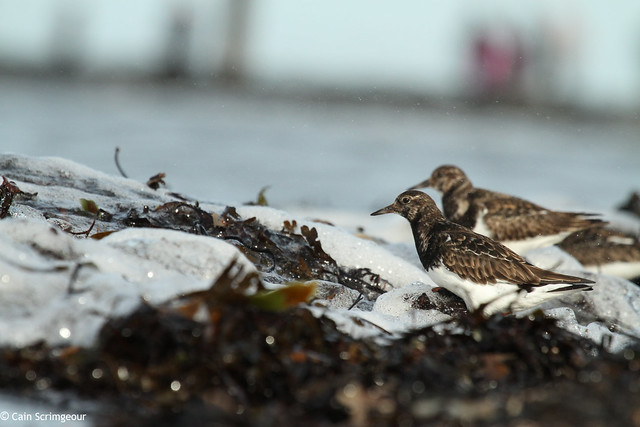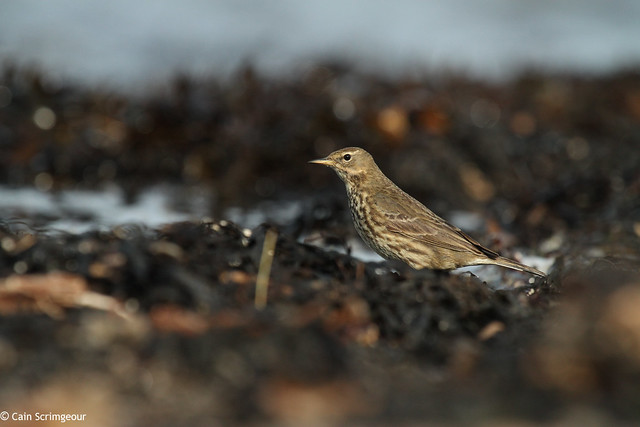

Whilst lying flat on the sand a few Rock Pipits began coming closer, as the tide covered most of the rotting seaweed.

This individual caught my eye…

I felt fairly confident that this was a Scandinavian Rock Pipit (littoralis), with its pink tinged underparts, reduced streaking and grey neck and mantle, with not seeing this race before I had a look at Mike's paper, and then sent a quick email to Alan and Mike, and it was confirmed.

Good work all round Cain.
ReplyDeleteGetting down 'n dirty, that's the way.
Brill.
Cheers John, the only way :)
ReplyDeleteHi Cain, certainly looks like a littoralis to me and a very smart individual at that! Resembles a Water Pipit in some ways with pinky tinge and very prominent supercilium etc but heavily streaked breast and upper parts greyer obviously rules that out.
ReplyDeleteNice one, Ashley
Cheers mate :) It certainly stood out amongst the others.
ReplyDelete